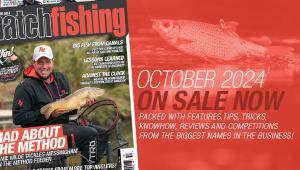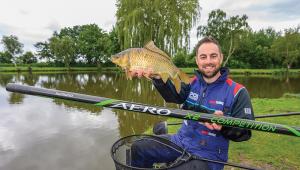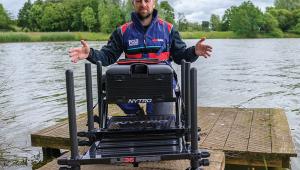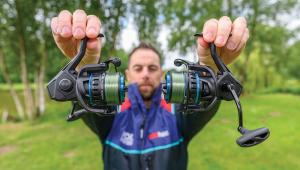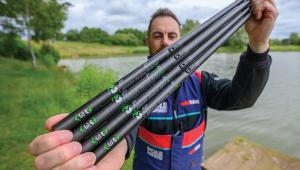The Right Place At The Right Time…
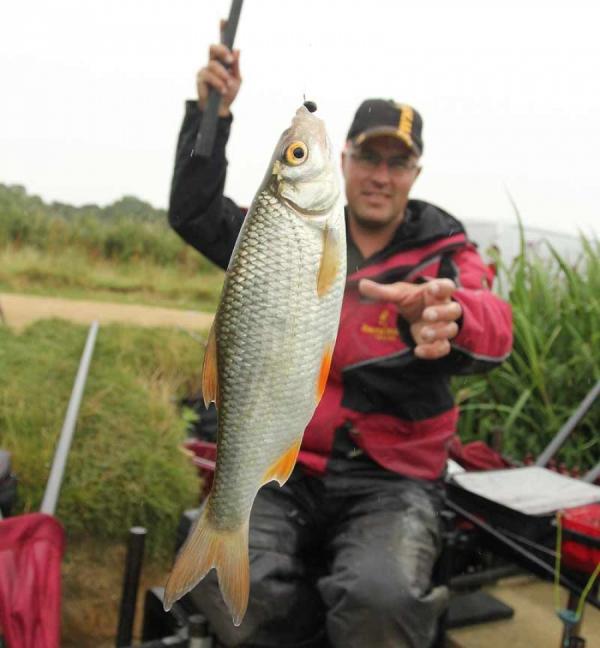
Steve Barraclough explains how planning where you fish and when is the key to big mixed bags.
Among the most crucial questions that anglers ask themselves before a session is what lines should they fish, and where should they fish them in order to catch the maximum amount in the quickest time possible
As crazy as it might sound, the better and more prolific the venue, the more difficult it is to get this right, because if you aren’t catching the best stamp of fish that are feeding at the shortest distance possible, you can bet your bottom dollar that someone, somewhere on the match will be!
To make mattes even more difficult, it is impossible to know for sure exactly how the fish will feed until you start fishing. So the smart way to go is to plan your attack around giving yourself options, so even if you don’t get it right straightaway, you can quickly adapt to the conditions that you are faced with and get the best from your peg.
Big Fish, Little Fish?
I like to think of myself as a very positive angler – and for me that means fishing for the biggest fish possible straightaway.
There are several reasons for this, but first and foremost is that big mug fish often feed straightaway. If you are going to catch a big bonus lump, it’s amazing how many times you catch it the very first time you go on a line.
Secondly, catching smaller fish is always easier when they are competing for food, and the best way to get them competing is to feed very regularly and get them confident before targeting them.
Bait For The Weight
Of course, exactly what bait you choose to fish and how you choose to feed it is the biggest deciding factor in how much you catch. This should be dictated by the species that you are fishing for, and here at Stubbs Hall there are a lot of roach to go at, as well as plenty of bigger skimmers and carp.
In a match situation, though, roach would be my bread and butter fish. It would be these that I looked to catch quickly, and rely on for the bulk of my weight. For this reason, I would always try to catch these as close as I comfortably can, and make this line my priority in terms of positioning. For today’s session it will be located at five metres at an angle slightly to my left, so it can be fed easily by hand, but I will be able to guide the fish away from the swim and play them in front of me without disturbing my swim.
Unusually, hemp will be my feed bait of choice on this swim. The reason for this at this particular venue is that I know the stamp of roach is substantial, but there are also a lot of smaller fish so I am keen to try and sort out the better samples. Of course, if the going is tough for the bigger stamp fish, I have the option of putting a maggot on the hook and shipping the smaller fish back anyway.
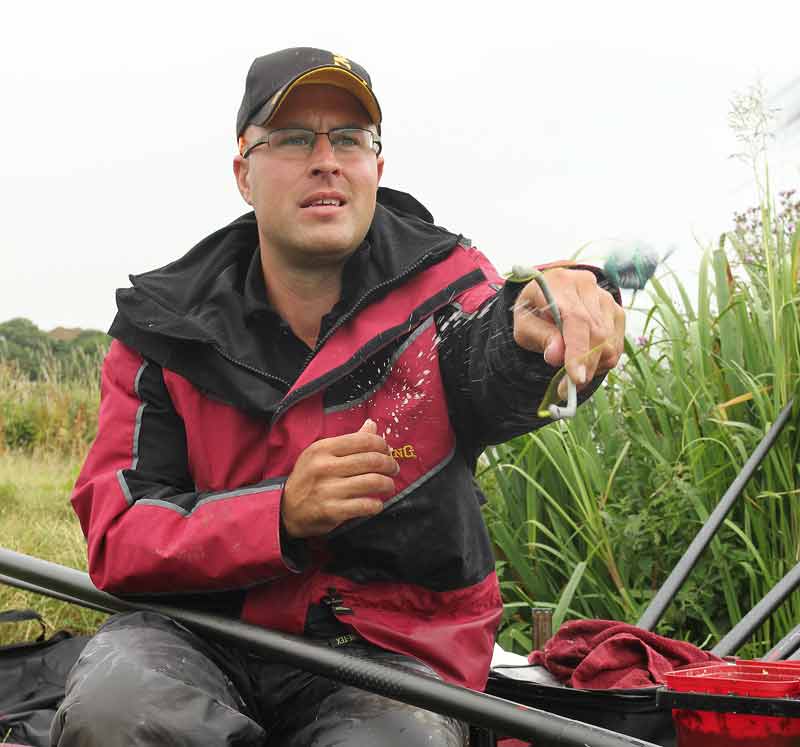
Make sure you feed the swims you aren’t fishing... it’s easy to forget!
Long For Quality
For the bigger fish, I plan on feeding a bed of groundbait on the long-pole line, and fishing a big piece of worm over the top of it. This approach gives me the option of catching everything from skimmers to big roach, tench and even carp.
The fact that I am able to feed a volume of bait on this line also means that I can leave it with confidence while I fish for small fish, and keep having a look on it to see if any better fish have settled.
In terms of feed here, I favour a 50/50 mix of Browning’s Etang and Lethal Feeder, with a generous amount of amino-rich chopped worm and caster also added to the mix.
The key thing that I think that you need for a worm and caster line is a good hard, flat bottom. Silt is your enemy when feeding any kind of particle bait or groundbait, as once the fish start rooting around in it as opposed to feeding properly you get false indications, and foul hook fish.
A heavy plummet is essential in helping you to identify this, and time spent searching for the best possible surface to fish on is time well spent.
So why just two lines to start with? Well I’m a big believer in keeping things as simple as possible. If I can catch off these two lines (and I expect to) I should have a simple and successful match. I can attack these two areas of my peg aggressively and know that whether big or small fish feed I have my bases covered.
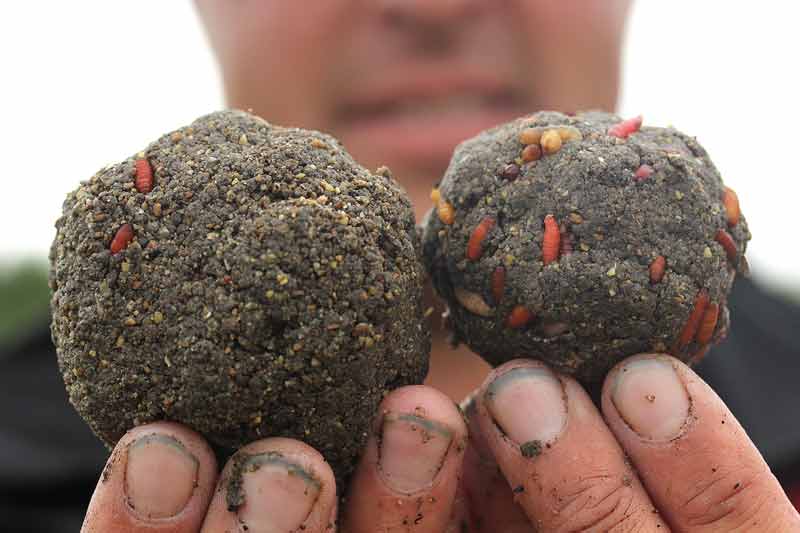
The mix on the left breaks down quickly and creates a feed area, while the right-hand one is hard and contains the bait, keeping the fish working for it in the swim.
Timing Secrets
It’s amazing how often the fishing can seem difficult, and you can be fishing away catching little fish, and all of a sudden you look up and see several anglers playing better fish.
What often seems to happen when it comes to big fish is that they ‘switch on’ or ‘switch off’ at a certain point in the day – so it really does pay to keep your eyes peeled.
Today has probably proved fairly typical of a lot of matches that I fish, in that the peg has pretty much fished itself. I started on the long line and took a good stamp skimmer straightaway, followed by a couple of slightly smaller samples. The small fish then spoilt play on this swim, as my float was literally getting held up every time I put a bait in, and roach in the 1 to 2oz bracket were the culprits.
All the time, I had been priming my short small-fish swim, feeding 30 pieces of hemp every minute to get the fish competing.
Unless things improve on the big-fish line, I plan on moving here after 20 or so minutes. After all, there is no point shipping a fish back from 13 metres when you can catch one just as quickly from six metres.
I top up the long-pole swim with a ball of groundbait rich with worms, just to see if this provokes some better fish to move back in on to the bait.
As an aside, it is often very clear when better fish are over your groundbait, as you stop getting bites off little fish as the big ones push them out the way!
Sadly my top-up produces no such results, so it is on the short line to try and plunder the small fish that are present as quickly as possible.
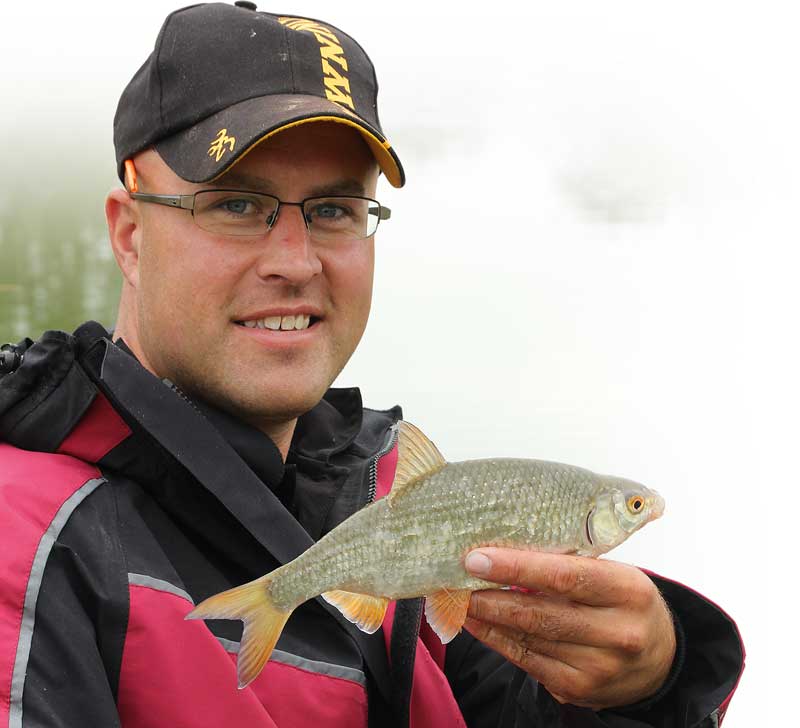
Switching to hemp on the hook brought a run of much bigger fish!
Mr Efficiency
Obviously this feature is focusing on fishing the right lines at the right times, but in order to really capitalise on the good decisions that you make in this area, you must be as efficient as you possibly can.
So the first few minutes on my short line will be all about working out how best to catch these fish. From how I put my rig in to what depth, float size and elastic is best, there is a lot to be worked out if I am to achieve maximum efficiency. Also, it is worth bearing in mind that you might have to evolve your approach as the day goes on to keep catching quickly.
Today, a 4x12 Frenzee float, shotted with strung No11s seems best. Fishing around three feet deep, the best way to feed seems to simply be to feed around 30 grains of hemp then flick my rig on the top of it. Doing this, bites seem confident and a Cenex No6 elastic means that most of the fish can be swung straight to hand.
My decision to fish hemp on the hook pays dividends too – as it certainly seems to sort out a better stamp of fish than a single maggot.
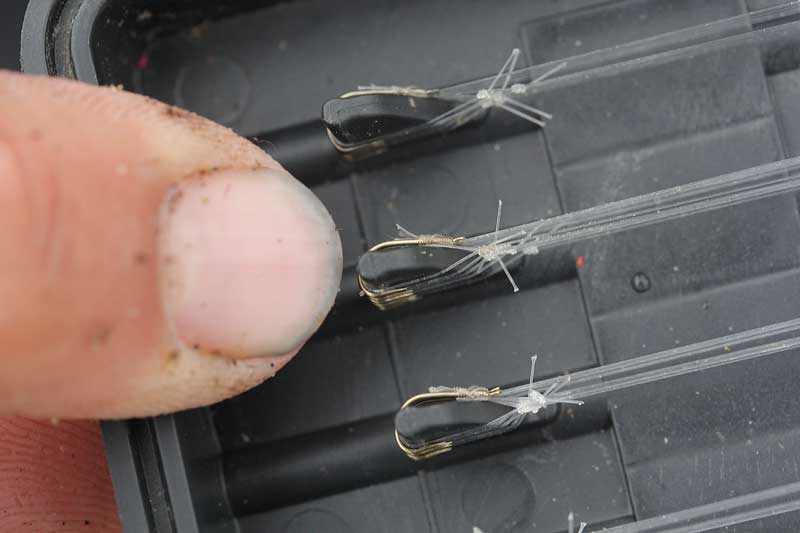
Tie your hooks to various line diameters so you can experiment with fishing lighter or heavier.
Buy A Ticket
So now I’m into a nice rhythm catching small fish, and I’m building a weight steadily. But how can I be sure that I am not being a busy fool – catching a 3oz fish every chuck at five metres when there is a 1lb-plus fish to be taken from the long line? Well the truth is you can never be sure, but the situation is much easier to gauge in live match conditions as you can often see what everyone else is catching relative to what you are putting in the net.
But if you can’t see anyone else, I like to work by my clock, and ‘buy myself a ticket’. As I have explained earlier, you can normally gauge very quickly whether there are any big fish present by the amount of small-fish activity that you experience when you go on the long line. I literally have a minute every half-hour sat long, and if I catch a small fish I top up and come back short. If on the other hand I don’t have any indication, I am more inclined to sit and wait for a bite from a proper fish – as often a lack of activity is a sure sign that a better fish has moved in.
Of course, you must be disciplined in terms of how much time you give the line, though; for sure give yourself a window to catch a big fish, but you must not get drawn into sitting and waiting for fish that aren’t feeding.
Instead, keep disciplined, be focused on the weight you need and, above all else, keep putting something in the net. By keeping busy in this way, you will find yourself picking up a brown envelope on mixed fisheries more often than not.
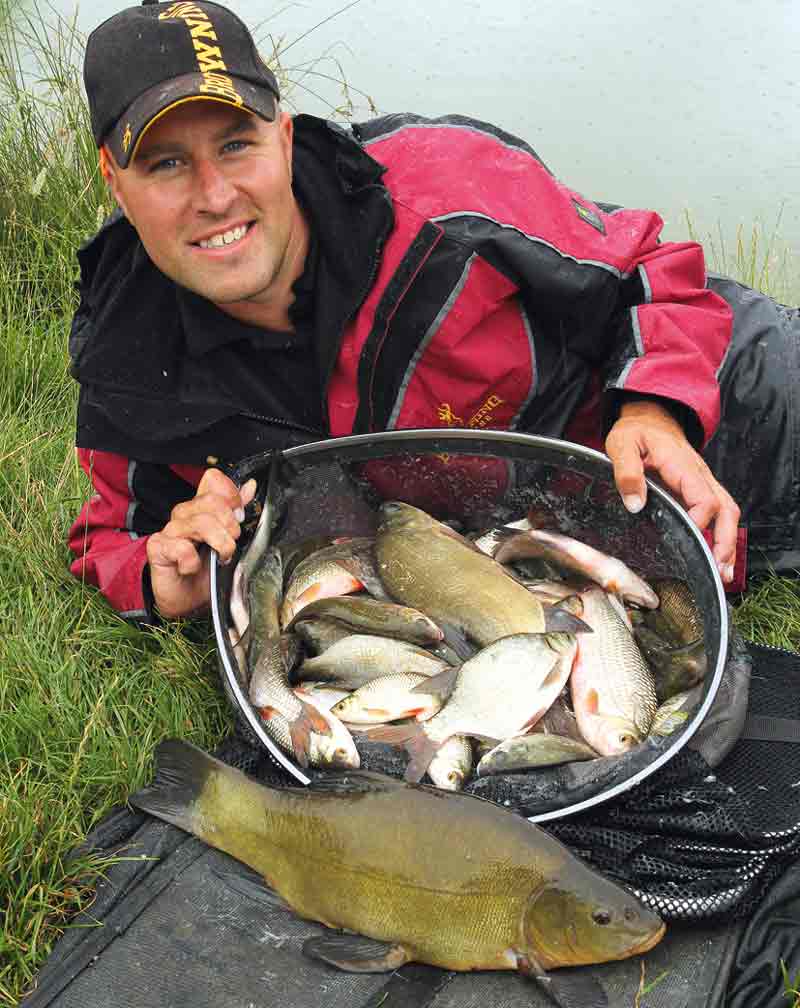
Cover your options for small fish, and ‘buy yourself a ticket’ to a bonus… the recipe for consistent results!
Like what you see?
Or buy a single issue
- Log in or register to post comments


